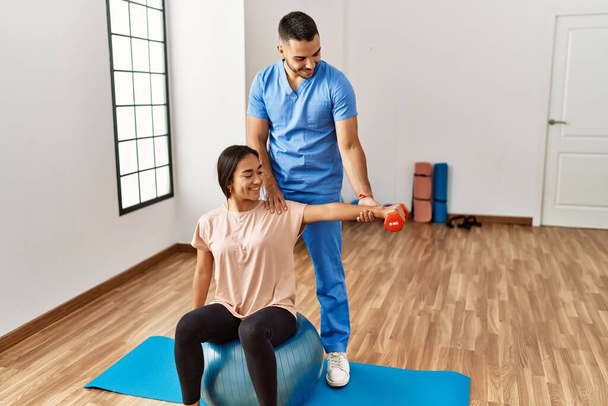Are you wondering what to wear to your physio appointment? Look no further! We’ve got you covered with this handy guide.
Dress comfortably in breathable clothing that allows for easy movement. Opt for proper footwear that provides stability and support. Don’t forget to choose flexible and non-restrictive attire for maximum comfort.
And if you need specific treatment, be sure to consider any clothing requirements.
Get ready to feel your best during your physio session!
Key Takeaways:
- Choose loose-fitting shorts or leggings for comfortable and breathable clothing
- Opt for orthopaedic shoes with arch support and cushioning for proper footwear
- Select stretchable leggings and loose-fitting tops for flexible and non-restrictive attire
- Wear easily removable layers and consider adaptive clothing for accessibility during appointments

Comfortable and Breathable Clothing
When attending a physio appointment, it’s important to wear comfortable and breathable clothing that allows you to move freely and stay cool. This is because during your session, you may be asked to perform various stretching exercises to improve flexibility and range of motion.
Comfortable clothing, such as loose-fitting shorts or leggings, and a breathable, moisture-wicking shirt, can help you perform these exercises comfortably and without restrictions. Additionally, wearing the right clothing can also help with postural alignment, as it allows your physiotherapist to observe and correct any imbalances or misalignment more easily.
Proper Footwear for Stability and Support
To ensure stability and support during your physio appointment, it’s important to wear proper footwear. Opting for orthopaedic shoes can provide the necessary stability and support for your feet and ankles. These shoes are designed with features such as arch support, cushioning, and a wider toe box to accommodate any foot issues or conditions. They can help alleviate pressure points, reduce pain, and improve overall foot function.
Additionally, if you have a history of ankle instability or are recovering from an ankle injury, wearing ankle braces along with your orthopaedic shoes can provide extra support and prevent further injury.
It’s crucial to prioritise the well-being of your feet and ankles during your physio appointment to ensure a successful recovery.
Flexible and Non-Restrictive Attire
During your physio appointment, make sure to wear clothing that allows for flexibility and freedom of movement. Opt for stretchable leggings that provide ease of motion and allow your muscles to stretch without restriction. These leggings are made of materials that offer elasticity, ensuring a comfortable fit while you perform various exercises or stretches.
Pair them with loose fitting tops that provide ample room for your arms and shoulders to move freely. Loose tops also allow for proper ventilation, keeping you cool and comfortable during your session.

Easy-to-Remove Layers for Accessibility
Ensure that you wear easily removable layers to your physio appointment, allowing for accessibility during your session. Opting for adaptive clothing and utilising dressing aids can make the process of removing layers much simpler and smoother.
Adaptive clothing is specifically designed to accommodate individuals with limited mobility or physical disabilities. These garments often feature innovative closures, such as Velcro or magnetic fasteners, that eliminate the need for buttons or zippers.
Additionally, dressing aids like reachers or long-handled shoe horns can assist in removing layers without straining or causing discomfort.
Consideration for Specific Treatment Needs
When considering specific treatment needs, it’s important to communicate any special requirements or concerns with your physiotherapist. They can provide you with the necessary information and guidance to ensure that your clothing choices align with the treatment you’ll be receiving. Some treatments may require specialised equipment, such as braces or supports, which may affect the type of clothing you should wear.
For example, if you’re receiving ultrasound therapy, it may be necessary to expose the area being treated, so loose-fitting clothing or a gown may be recommended. Similarly, if you’re undergoing hydrotherapy, you may need to wear swimwear or clothing that can get wet.
Frequently Asked Questions
Are There Any Specific Clothing Materials That Should Be Avoided for a Physio Appointment?
Avoid clothing materials that restrict movement or cause discomfort during a physio appointment. Certain fabrics may hinder the effectiveness of treatments. Choose clothing that allows for ease of movement and enhances comfort.
Can I Wear Sandals or Open-Toed Shoes to a Physio Appointment?
You should avoid wearing sandals or open-toed shoes to a physio appointment. It’s best to wear comfortable, closed-toe shoes that provide support and stability. This will help prevent any potential injuries or accidents during your session.
Is It Necessary to Wear Loose-Fitting Clothes for a Physio Appointment?
It’s important to wear loose-fitting clothes for a physio appointment. This allows your therapist to easily assess and treat your body. When choosing footwear, opt for comfortable and supportive shoes to aid in your mobility.
Are There Any Specific Clothing Items That Should Be Avoided for Certain Types of Physiotherapy Treatments?
Avoid clothing that restricts movement, such as tight jeans or dresses, for certain types of physiotherapy treatments. Opt for comfortable, loose-fitting attire that allows the therapist to assess and treat your condition effectively.
Should I Bring Any Specific Clothing or Equipment for Aquatic Physiotherapy Sessions?
For aquatic physiotherapy sessions, it’s best to wear comfortable swimwear and bring any necessary equipment like flotation devices or water shoes. This will help maximise the effectiveness of the sessions and provide the benefits of water therapy for your specific injury or condition.